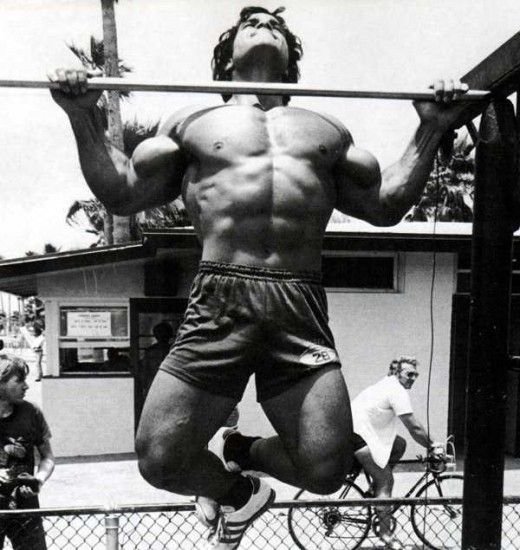Building an Effective Calisthenics Workout Program: Keep It Simple

Building an Effective Calisthenics Workout Program: Keep It Simple
When it comes to creating a successful calisthenics workout program, many people fall into the trap of seeking the perfect routine. This pursuit can lead to confusion, program hopping, and ultimately, frustration. The idea of a “perfect” workout program is a myth. The truth is, what truly matters in any fitness journey is consistency. Instead of complicating your routine with intricate exercises and overly detailed plans, it’s better to focus on a simple, sustainable approach that you can maintain over time.
The Myth of the Perfect Program
In the world of fitness, it’s easy to get caught up in the idea that there’s a perfect workout program out there that will solve all your problems. With so much information available online, it’s tempting to constantly switch programs, hoping that the next one will be the magic bullet that finally delivers results. However, this constant search for perfection can actually hinder your progress.
The reality is that the perfect program doesn’t exist. Everyone’s body is different, and what works for one person might not work for another. Moreover, even if you find a program that seems ideal, your needs and goals will likely change over time, making that program less effective as you progress. Instead of chasing perfection, focus on building a calisthenics workout program that is simple, adaptable, and consistent.
Why Simplicity Works
Many beginners make the mistake of thinking that a more complex workout routine will yield better results. They might add flashy exercises or complicated sequences, believing that these will accelerate their progress. However, the opposite is often true. Simplicity is the key to long-term success in any calisthenics workout program.
Basic movements like push-ups, pull-ups, squats, and dips are incredibly effective because they target multiple muscle groups and mimic natural body movements. These exercises build functional strength that translates into everyday activities. Moreover, because these movements are simple, they allow you to focus on form and consistency, which are crucial for making progress and avoiding injury.
The Importance of Consistency
Consistency is the most important factor in any calisthenics workout program. You could have the most scientifically optimized program in the world, but if you don’t stick with it, you won’t see results. Consistency means showing up for your workouts regularly, challenging yourself, and gradually increasing the difficulty as you progress.
Think of fitness as a journey, not a destination. The gains you make come from small, incremental improvements over time, not from a single perfect workout. It’s better to follow a simple, straightforward program consistently than to jump from one complicated routine to another, hoping for quick fixes.
Crafting Your Calisthenics Workout Program
When designing your calisthenics workout program, focus on the basics. Here’s a simple guide to help you create a routine that’s effective and easy to follow:
1. Start with the Basics
Your program should revolve around fundamental calisthenics exercises that target all the major muscle groups. These include:
- Push-ups: Great for building upper body strength, targeting the chest, shoulders, and triceps.
- Pull-ups: Essential for developing back and bicep strength, as well as improving grip.
- Squats: A powerful exercise for building lower body strength, focusing on the quadriceps, hamstrings, and glutes.
- Dips: Effective for targeting the triceps, shoulders, and chest.
- Planks: Excellent for building core stability and strength.
These exercises form the foundation of a solid calisthenics workout program. They are simple, yet they challenge your entire body and build functional strength.
2. Create a Routine You Can Stick To
Once you’ve chosen your exercises, it’s time to structure your routine. Here’s an example of a beginner-friendly calisthenics workout program:
-
Day 1: Upper Body
- Push-ups: 3 sets of 10-15 reps
- Pull-ups: 3 sets of 5-10 reps (use assistance if needed)
- Dips: 3 sets of 8-12 reps
-
Day 2: Lower Body
- Squats: 3 sets of 15-20 reps
- Lunges: 3 sets of 10-15 reps per leg
- Calf Raises: 3 sets of 20 reps
-
Day 3: Core
- Planks: 3 sets of 30-60 seconds
- Leg Raises: 3 sets of 10-15 reps
- Russian Twists: 3 sets of 20 reps per side
-
Day 4: Rest or Active Recovery
-
Day 5: Full Body
- Repeat a combination of exercises from previous days
-
Day 6: Rest or Light Cardio
-
Day 7: Rest
This routine keeps things simple, focusing on the basics while ensuring you’re working all major muscle groups. As you progress, you can increase the number of sets, reps, or difficulty of the exercises (e.g., progressing from knee push-ups to full push-ups).
3. Focus on Progression
In any calisthenics workout program, progression is key. As your strength and endurance improve, you need to challenge yourself to continue making gains. This doesn’t mean drastically changing your routine; instead, focus on small, manageable increases. For example:
- Increase the number of reps or sets you perform.
- Add a weighted vest or resistance bands to your exercises.
- Progress to more advanced variations of the exercises, such as moving from push-ups to decline push-ups or from planks to side planks.
4. Track Your Progress
Keeping a workout journal or using an app to track your workouts can be incredibly helpful. Recording your sets, reps, and any modifications you make allows you to see your progress over time. This not only motivates you to keep going but also helps you identify areas where you might need to push harder or adjust your routine.
5. Listen to Your Body
Consistency is important, but so is listening to your body. Rest and recovery are essential components of any calisthenics workout program. If you’re feeling overly fatigued, sore, or unmotivated, it might be time to take a break or adjust your routine. Remember, fitness is a lifelong journey, and taking care of your body will help you stay on track for the long haul.
Avoiding Common Pitfalls
When following a calisthenics workout program, it’s easy to fall into some common traps:
- Program Hopping: Stick with one routine for at least a few months before making significant changes. This allows you to truly gauge its effectiveness.
- Overcomplicating: Keep your routine simple and focus on mastering the basics before moving on to more advanced exercises.
- Neglecting Recovery: Don’t underestimate the importance of rest. Your muscles need time to recover and grow stronger.
Conclusion
The key to a successful calisthenics workout program isn’t finding the perfect routine—it’s about consistency, simplicity, and progression. By focusing on the basics, creating a routine you can stick to, and challenging yourself over time, you’ll see significant progress in your fitness journey. Remember, the best program is the one that you can follow consistently, so find what works for you and stick with it. Over time, you’ll build the strength, endurance, and confidence to take on more advanced challenges, all while enjoying the benefits of a simple and effective calisthenics routine.



